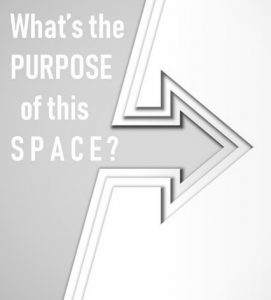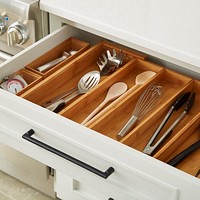Do you need to take time to declutter your life? Answer these questions to find out the answer to that question:
- Can you find what you need in 15 seconds or less?
- Can others in your home or office find what they need in 15 seconds or less?
- Does your current way of organizing your environment help you to stay focused on what’s most important to you?
- Do you enjoy being in your environment and how it makes you feel?
If you answered NO to any of the above questions, keep reading. These tips will help you declutter any space.
If you plan to declutter your entire home, I suggest that you begin with something small. For example, let’s say that you want to declutter your bedroom. Begin by decluttering and reorganizing the nightstand or a dresser. Then move to bigger projects like the closet. If you have a lot of work to do, don’t plan to do the whole space in one working session. This can be overwhelming for some people. Allow yourself the satisfaction of working in one corner or one area, then move onto bigger projects.
 Feeling a sense of accomplishment will help motivate you to keep you going. Begin with something that will have the biggest return for you.
Feeling a sense of accomplishment will help motivate you to keep you going. Begin with something that will have the biggest return for you.
For example, let’s say that your greatest frustration is around paying bills. Each time you are ready to sit down and pay them, you can’t find where they are.
The return on your investment of time will be big when you have this part of your life organized. Focus on setting up a bill-paying station (a place to keep the bills when they arrive, stash of envelopes, stamps, return address labels, etc.). As you organize other spaces, you will have a place to put the bills as you find them in piles that may be scattered throughout the house.
I use a three-step process when organizing any space — be it an office, an attic or garage, a kitchen or bedroom. The same basic process applies anywhere.
Here’s the process used for organizing any space: Designate, Eliminate, Contain.
I’ll demonstrate how this three-step process works by using the kitchen in the example below.
Step One: DESIGNATE
Designate the purpose of the space you are about to declutter and organize. What kinds of activities will take place here? Make a list of every activity or purpose you can think of.
For example, in a kitchen you might list some of these purposes:

- Food preparation & clean-up
- Cooking
- Eating
- Storing cookware and other kitchen items
- Storing recipe books
- Storing eating utensils & dishes
- Food storage
- Phone/message center
- Planning center (family calendar)
- Place for kids to do homework
- Social hub for entertaining guests
- Bill-paying center
- Mail processing center
Step Two: ELIMINATE
Eliminate anything that does not fit the purpose of the space you are organizing. Clutter can be tangible items, activities, thoughts, or even relationships.
“Clutter is anything you own, possess, or do that
does not enhance your life on a regular basis.”-Kathy Paauw
Once you get clear about what is not enhancing your life to keep, it makes it much easier to toss or give it away.
Create four labeled sorting containers:
 Give away
Give away- Throw away
- Store in this space
- Store in another space
Paauwer Tip #1: I do not recommend a “sell” box. My experience is that garage sales are very  time-consuming and generally yield little profit, with lots of things left over at the end. I have also found that you can usually generate more in tax savings by donating gently-used items to charity than you can by selling them.
time-consuming and generally yield little profit, with lots of things left over at the end. I have also found that you can usually generate more in tax savings by donating gently-used items to charity than you can by selling them.
Paauwer Tip #2: For those in the USA, TurboTax offers a free program called ItsDeductible, which helps you value donated items  throughout the year as you donate things. I save a lot of money on taxes each year by using this valuation tool to keep track of the value of what I donate to charity. Even if you don’t use the tax preparation part of this software program, TurboTax Deluxe is worth purchasing so you can have it sync with ItsDeductible and auto-generate the Form 8283 that you will need if your in-kind donations are worth more than $500 for the year. Be sure that you keep track of your donated items as you donate them, rather than trying to remember everything at the end of the tax year.
throughout the year as you donate things. I save a lot of money on taxes each year by using this valuation tool to keep track of the value of what I donate to charity. Even if you don’t use the tax preparation part of this software program, TurboTax Deluxe is worth purchasing so you can have it sync with ItsDeductible and auto-generate the Form 8283 that you will need if your in-kind donations are worth more than $500 for the year. Be sure that you keep track of your donated items as you donate them, rather than trying to remember everything at the end of the tax year.
Now you can go through the entire contents of the kitchen–with the above definition of clutter in mind–and sort everything into the four categories mentioned above.
Begin by removing everything from the counters and walls. Sort through everything with your purpose statement or list in mind. Then do the same with all the drawers, cabinets, shelves and pantry. Don’t forget the top of the refrigerator and inside the refrigerator. Sort all items in one area before moving to the next. If you are right-handed, work clockwise around the room. If left-handed, work counter-clockwise.
Paauwer Tip #3: As you are going through the space and sorting everything into one of the four piles or boxes mentioned above,  do not leave the space you are organizing to take something to another room. Let’s say you find a screwdriver in a kitchen drawer that belongs in your toolbox in the garage. If you take the screwdriver to the garage, now you’ve just moved into another space that may need to be organized. This can lead to overwhelm and pull you away from your focus, which was to organize the kitchen.
do not leave the space you are organizing to take something to another room. Let’s say you find a screwdriver in a kitchen drawer that belongs in your toolbox in the garage. If you take the screwdriver to the garage, now you’ve just moved into another space that may need to be organized. This can lead to overwhelm and pull you away from your focus, which was to organize the kitchen.
Instead, place the screwdriver in the “store in another space” box and stay in the kitchen until your organizing session is ready to end. Once you are finished in that space, take the “store in another space” box with you and deposit the contents in the other spaces where they belong. Failure to follow this tip may result in not finishing what you started. It’s demoralizing to spend time “organizing” and have nothing to show for it at the end of your session. You’ll end up with a bunch of partially organized spaces in your home, but not with the satisfaction that comes with completing the reorganization of one space.
What to Keep and What to Toss
As you go through the sorting process, ask yourself these questions to help you decide what to keep and what to let go of:
 Is this item useful to me? Have I used it in the past year?
Is this item useful to me? Have I used it in the past year?- By the time I might need it, will it be obsolete?
- Is it in good condition? Does it work properly? If not, either fix it or get rid of it.
- Do I have too many of these? If you cannot use them all, keep what’s in the best condition and give the rest away. Being in good condition has nothing to do with whether or not you need it!
- Is this a seasonal item I can store elsewhere? (If you have limited space, you can store holiday and seasonal items in a labeled storage box or in a difficult-to-reach space.
- If I got rid of this now and discovered I needed it later, could I fairly easily replace it?
- If this place burned down and I lost this item, would I actively seek to replace it?
- What’s the worst thing that could happen if I got rid of this?
- How will it enhance my life to keep this?
Step Three: CONTAIN
Everything needs a designated storage space. Contain what’s in the “store in this space” box. After you have eliminated things that do not fit the purpose of the space, purchase some organizing tools to use for storing items you place back into the cabinets and drawers or on the counters and walls. Use the following guidelines as you put things away:
- Store things used most often in drawers and cabinets that are easiest to get to.
- Store similar things together (microwave dishes, baking supplies, Tupperware & matching lids, etc.)
- Store your most often used eating utensils and dishes near the dishwasher. This will make it easier to unload when you have clean dishes.
- If you have small children, store things you want them to reach (healthy snack items, their drinking cup, etc.) down low, and things you don’t want them to reach up high (breakables, alcohol, toxic items, foods you want to limit or restrict from their diet, etc.)
- Store items on the counter only if you use them regularly (at least 2-3 times per week). Otherwise, put them away. For example, if you seldom make cookies, perhaps the cookie jar can go!
- Consolidate duplicate items into one container (spices, etc.). The exception to this would be things with expiration dates.
Once you have put things away where you want them, use a label maker to label what goes where. Organizing tools, such as drawer  dividers, turntables for spices, shelving space-savers, or can dispensers, can help keep things in their place. If you share the space with others, you’ll need to get their cooperation to put things back where they belong.
dividers, turntables for spices, shelving space-savers, or can dispensers, can help keep things in their place. If you share the space with others, you’ll need to get their cooperation to put things back where they belong.
Go back to the list you created in Step 1 and review it to see if you need to purchase anything in your “back to school shopping” to support the activities you identified. For example, do you have adequate lighting for the kids to do their homework at the kitchen counter? Do you have an adequate supply of the tools they need for homework (pencils, erasers, rulers, etc.)? Make a shopping list of things that you need to support the activities you’ve identified for this space. Once you’ve purchased them, keep them in the same place and teach others to put things back where they belong.
I’d love to hear what area you decide to begin with as you declutter your home or workspace. Please comment below. And if you’d like to explore the possibility of getting some help putting systems in place so you can be more productive and less stressed, let’s schedule a no-cost discovery call today.
Next week I’ll share some common productivity mistakes you may be making at work, and tips for how to shift that.
Additional Resources
- Blog: If You Think You Have a Clutter-Free Life, Think Again!
- Blog: Declutter Your Life
- Blog: Organize Your Home Office
- Blog: What Does Clutter Cost You?
- Blog: 10 simple strategies to make your life easier with an organized closet
- Free Webinar on how to handle paper clutter: Buried in Paper
- Free Webinar on how to set up a FINDING system that works: Find Anything in 5 Seconds or Less

Life Architect – Creating Blueprints for Purposeful & Productive Lives
Kathy@OrgCoach.net www.OrgCoach.net Follow me on Facebook






Kitchen Org: When I unload the dishwasher, I put the dishes, cups, glasses on a tray to move the lot together — because all that gets stored in a spacious cabinet at the other end of the counter! Above the dishwasher is a narrow cabinet suited only for spices, oil, vinegar. I’m living in a rental apartment for 1 year max, so no chance I’ll reconfigure the cabinets. I use the tray, stored near the dishwasher (or near the dishes) as a stopgap time-saver — at least I don’t transfer items to the far end of the counter just a couple or a few at a time. If one has the luxury of [re]doing one’s kitchen, save steps and time — configure it for easy daily organization.
Ellen, this is a brilliant idea to save time if you are not able to store the most frequently-used kitchen items near the dishwasher. We had a flood in our kitchen two months ago and I will be “moving back in” next week after a couple months of having no kitchen. I will also become a grandmother in October, so I plan to move back in with childproofing ideas in mind (nothing dangerous or breakable down low). Because of water damage, I had to get new kitchen cabinets, and I took the opportunity to create some storage space that will work even better than what I had before. When you move into more permanent space, you might have a lot of fun looking at all the cool kitchen organizing ideas out there. It has been fun for me!